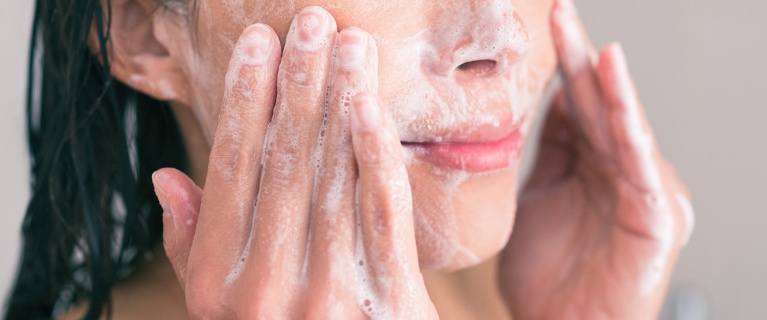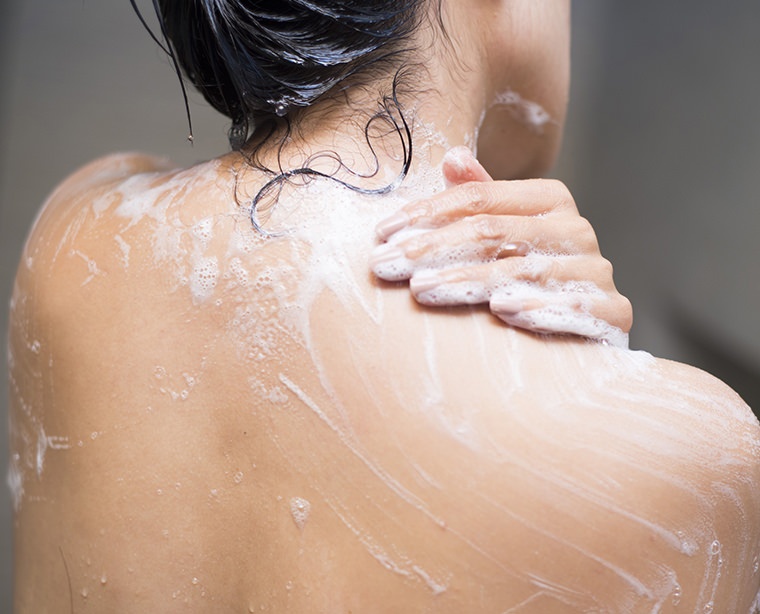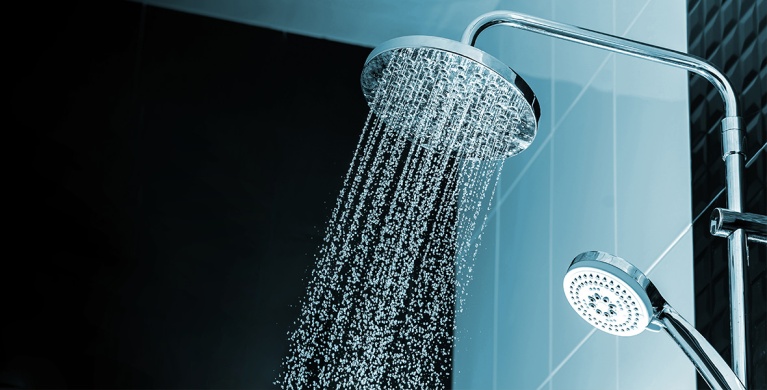

Cleansing and hydrating your skin with atopic eczema

Regular washing is important at every stage of atopic eczema, as cleansing helps prevent infection in your now fragile skin. Always hydrate your skin after every bath or shower: washing and hydrating should go hand in hand.
Wash every day
Bath or shower
Take a 5-minute bath or shower every day (duration recommended by European experts), including shampoo, being sure to follow the good cleansing practices for eczema. You may take another bath or shower throughout the day if you participate in an activity (sports, sea, etc.), but this time without any cleansing products: just clean water.
You may adapt the frequency depending on the season. You may want to wash less frequently in the winter, for example, especially for children.
What cleansing products should you use?
Atopic skin lacks oily substances. This means avoiding soaps that are detergents, which tend to emulsify what little oil is left on the skin. Opt instead for the following:
- Cleansing oil
- Cleansing gel or cream
- Syndet (synthetic detergent)
- Dermatological bar
Use products adapted to atopic skin and which are non-irritant and free of allergenic substances.
One wash with soap per day is sufficient, with a particular focus on the face, folds and the perianal region. No need to wash with soap from head to toe every single day.
After cleansing, always hydrate
Hydrating creams
Emollients are key allies when you live with atopic skin. You should quickly learn to make them a part of your daily routine. They help to:
- delay flare-ups,
- treat dry skin,
- and limit the penetration of irritants or allergens in our environment.
This preventive treatment helps repair the skin and restore its protective function (skin barrier). You must therefore select and use the emollient that suits you best: if it stings or itches, then it is unsuitable and needs to be switched! You often hear of hydrating creams, but actually emollients are also available in the form of cerates, balms, lotions, oils, or even sprays, and much more.
Cortisone cream represents the other half of treatment, used to eliminate inflammation. It is applied only during flare-ups to the eczema patches directly, in combination with the emollient applied as a complementary treatment to the rest of the body.
Applying your hydrating cream effectively
Be sure to use an ample amount: a person with atopic eczema uses approximately two large bottle per month. Also, be sure to apply it all over your body: about 5 minutes are needed to hydrate the entire body.
Be careful to apply it to healthy skin only, avoiding any overly intense red patches. Hydrating cream should not be applied to inflamed areas. (If it stings, that is probably why).
Applying your hydrating cream should be a pleasant part of your daily routine, like brushing your teeth. See our tips on how to apply your cream effectively using, for example, the ladybug technique. Does your skin feel sticky or greasy?
That means you have applied too much cream. Try applying less. If the feeling persists, the texture may not be right for your skin. Ask your pharmacist for advice. He or she will be able to help you try the various textures available on the market. New innovations are added to the shelves all the time in this field.

